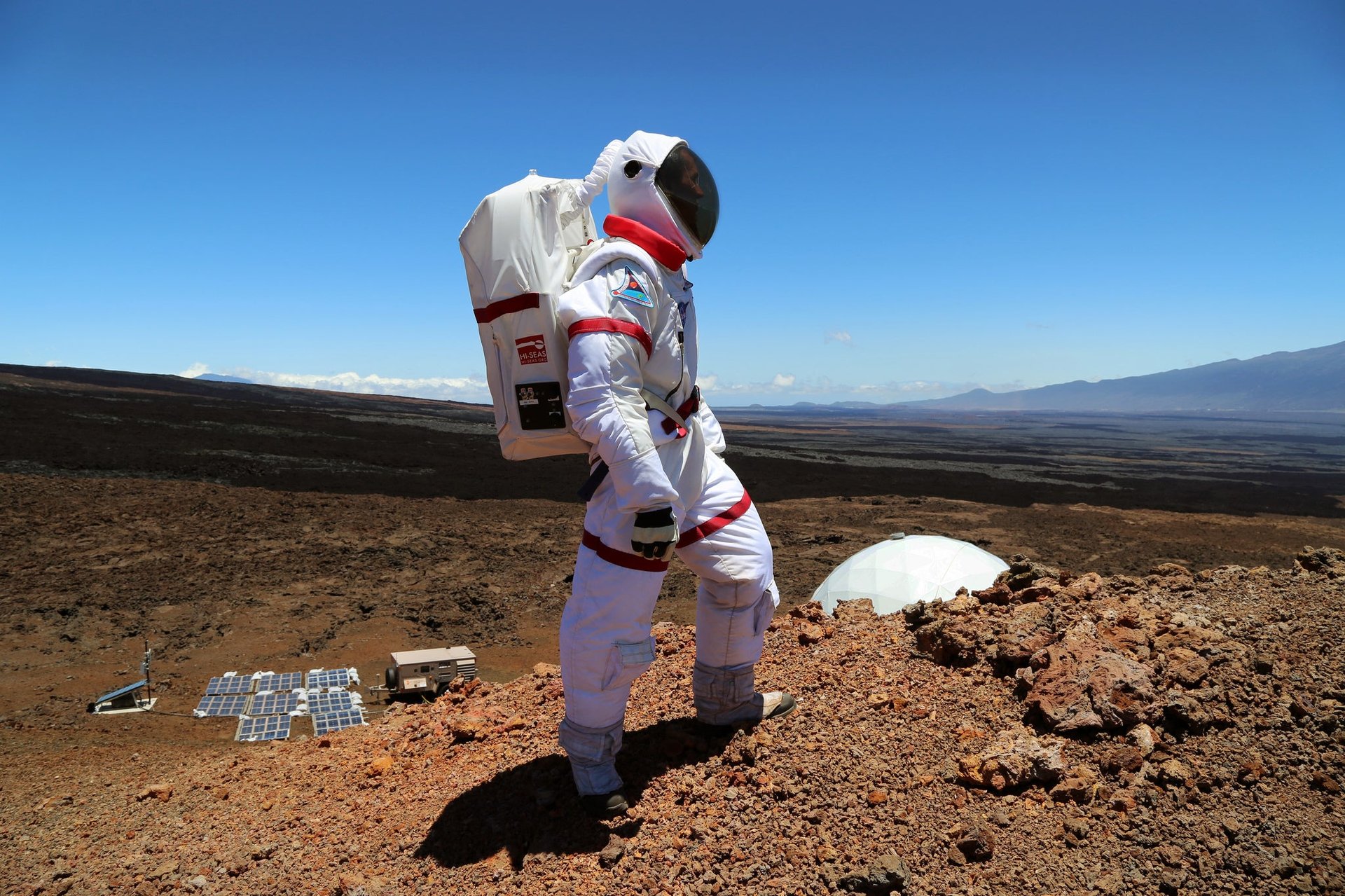A NASA-funded, year-long experiment in Hawaii to mimic life on Mars has come to an end
Life on Mars is closer than you think. Six people just lived “there” for a whole year. But today (Aug. 28), the crew of a NASA-funded Mars simulation in Hawaii can finally take off their helmets and return to earth.


Life on Mars is closer than you think. Six people just lived “there” for a whole year. But today (Aug. 28), the crew of a NASA-funded Mars simulation in Hawaii can finally take off their helmets and return to earth.
NASA hopes to send humans to Mars by 2030. In preparation, HI-SEAS (Hawaii Space Exploration Analog and Simulation) is running ”campaigns” made up of several missions to determine the resources, conditions and crew makeup that might make such a trip a success. The latest campaign saw three different gender-balanced crews shut up for four, eight and then 12 months. Their home for that time: a small dome, 8,000 feet (2,400 meters) above sea level, on the rocky plane of the Mauna Loa volcano in Hawaii, the closest to a Mars habitat that we can get on Earth. The mission that ended today was their longest test yet of the effects of isolation and confined conditions that a three-year-long flight to the red planet would entail.
The latest crew had roles including biologist, physicist, architect and “crew journalist.” To mimic life on Mars in their dome, they had limited resources (food arrived every four months, water every two), and they could only communicate with earthlings via emails delayed by 20 minutes, the time necessary for signals to travel to and from Mars. The mock astronauts could leave their yurt-like habitat, but only in puffy, heavy space suits, with limited oxygen.
Thankfully, the crew was not subjected to Big Brother-style camera surveillance, with only formal meetings in the kitchen space recorded on film. However, built-in sensors measured activity levels in different areas. Each member of the crew also wore a sociometer, a pocket radio-like gadget which measured social interactions using data like noise volumes. The crew also had to fill out weekly surveys, and play a virtual reality game designed to comfort astronauts who might suffer from loneliness on long missions.
If being locked up with the same six people for an entire year wasn’t enough, the researchers purposely triggered stressful, emergency situations to test group cohesion and performance. For example, they were told a deadly radiation wave was about to hit the planet due to a sudden increase in solar activity, forcing them to take shelter outside the dome in tubes formed out of cooled lava. The crew also had to solve problems which arose naturally, including sudden power blackouts and broken research tools.
Kim Binsted, the project’s principal investigator says it can be particularly challenging for scientists to detect any mental or psychological problems at an early stage in astronauts. ”They are very stoic people,” says Binsted. “They hardly ever complain and are generally very positive people.”
The brain power in the dome—the crew consisted of a physicist, aerospace engineer, soil scientist, architect, physician and an astrobiologist —didn’t prevent arguments similar to what you’d hear in a college dormitory. Binsted says there was plenty of typical bickering about ”who ate the last piece of chocolate, ‘you are chewing too loud’ or when someone didn’t do their share of chores.”
Researchers will now analyze and compare data from the three simulation missions focusing on isolation effects to pinpoint what might fuel problems between crew members on a future trip to Mars. ”There is never going to be a perfect crew. Things will go wrong,” Binsted says. But insight from these experiments might help a crew recover quickly from issues when they arise.
HI-SEAS will now also move on to its next campaigns, which will include two more missions using the dome. The next, starting in January 2017, will focus on crew selection, and the ideal makeup of a Mars-bound team. Future missions will also test remote medical treatments for issues like the flu or a broken leg, as well as different recycling systems.
Researchers aren’t sure how many Mars simulations we’ll need before we can embark on an actual trip. Some have also wondered whether it would be wise to run simulations on the Moon and asteroids before attempting the journey.
There are also concerns that politics (and therefore funding) might stand in the way of a trip, more than technology. “If we want to reach Mars as quickly as possible, we have to take into account that the US president changes, at the best, every 8 years,” Binsted says. ”The success behind the Moon mission was they managed to do it under relatively few leaders.” Luckily, politics isn’t likely to be a problem when we touch down on Mars.